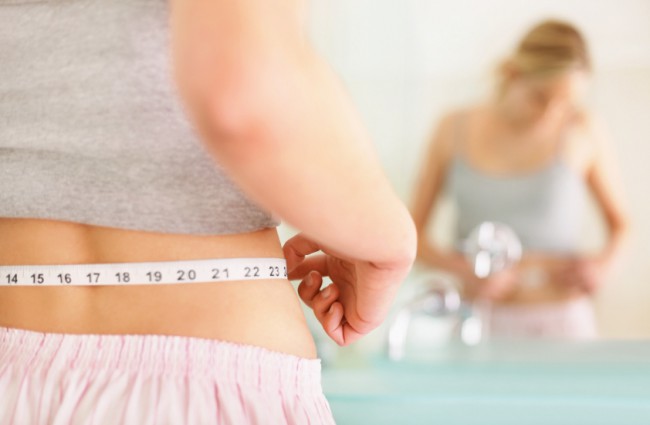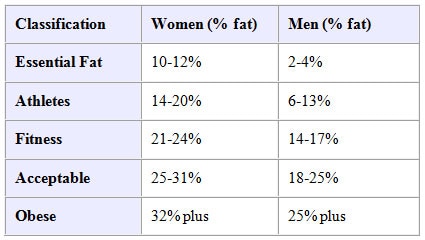Like dental checkups, vacuuming under the couch or grocery trips after a day at the office, measuring body fat is something many of us dread and dodge. But with that new bathing suit hanging in the closet and beach days being added to the calendar, knowing just how many inches you can pinch might be on your mind.
Body fat essentially is the amount of fat packed into your body, excluding everything else (muscle, bones, organs, even water). As hard as you may work to burn it off, the body does need some fat to function properly. It’s when you accumulate an excess that things get…uncomfortable. And unhealthy.
So how much body fat is too much? Here are some simple guidelines:
Not sure where you stand on the body fat percentage scale? Many gyms will provide a free body fat assessment if you request it. But there are several ways to do it yourself, from simple pinch tests to digital calculators. Some methods tend to be more accurate than others, but having at least some idea of where you stand can be helpful in planning your fitness routine.
Pinch test. This method is definitely the most practical, convenient, cost effective and accurate way to measure and track body fat percentage. It involves using calipers, such as the Sequoia Fitness Products MetaCal Body Fat Measurement tool or Defender Body Fat Caliper. To use them, you’ll pinch different areas of your body with your fingers and use the calipers to measure the thickness (instructions and tracking charts are included). Make sure you—or someone helping you—pinches the exact same spots each time or your readings won’t be accurate.
Measuring. Used by the U.S. Navy, this method of testing provides an estimate of body fat based on various body measurements . For women, hips, waist, neck and height are typically measured; for men, waist, neck and height are measured. Like the pinch test, this method is convenient, quick, easy and cost effective—but it may not be as accurate as some other methods. Simply use a measuring tape, such as the AccuFitness MyoTape, and an online calculator (use search terms “Navy body fat calculator”).
Fat monitor. Handheld fat monitors work by measuring the electrical conductivity of your body. They send a subtle electrical current through your body to measure muscle tissue, which contains a high percentage of water (body fat pretty much has no water). This method is quick and easy, and the unit is portable and calculates numbers for you, which makes it virtually hassle free. The Omron Healthcare Fat Loss Monitor stores information for up to 9 users, too, so it’s useful for your whole family.
Hydrostatic testing. It’s not easy or inexpensive, but water displacement testing is by far one of the most accurate body fat tests. It’s a service offered by some weight and wellness centers, or a mobile unit may visit your gym (which is how I was able to try it). This test—which takes 20 to 30 minutes—requires being submerged in a specialized tank of water, so you’ll need to be comfortable with holding your breath. Bone and muscle are denser than water, so someone with greater muscle mass will weigh more in water and have a lower body fat percentage. A person with a higher amount of fat in her body will be lighter in water, with a higher percentage of body fat.


